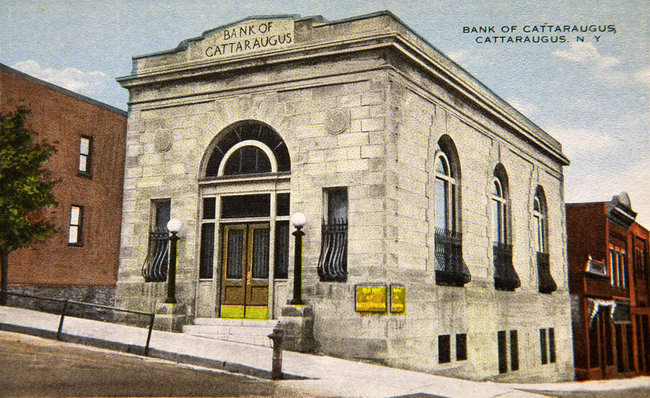In the movie classic, It’s a Wonderful Life, Jimmy Stewart plays the hero whose foil is a crusty, tight-fisted banker, the stereotype of the soulless businessman. For years, the mean-spirited banker has been a useful creation of Hollywood screen writers, novelists, and the media.
Unfortunately, banks reinforce this stereotype when they make mistakes or treat customers badly. A recent example is the Wells Fargo’s scandal involving the sale of products to customers who never asked for the products.
But this image is much more fiction than reality, and contrary to stereotype, it is really Jimmy Stewart’s character who best exemplifies the supportive, empathetic role that bankers and small bankers play in the communities in which they serve.
In the U.S., there are roughly half as many such community banks as there were four decades ago, when deregulation jump-started a wave of consolidations. Community banks are not Community Development Financial Institutions, which exclusively serve low income markets, nor are they regional or money-center bank which serves large companies and large populations. They’re at the smallest end of the corporate size spectrum, working with small businesses which do not have financing alternatives in the public or private capital markets.

U.S. bankers restructure billions of dollars of loans to help their customers while simultaneously writing off billions of dollars of other loan losses. But banking is about much more than lending. Community banks provide capital for new and growing businesses and housing loans. They provide banking and education services to customers. With deep knowledge of the places where they operate, they make charitable donations to support communities.
Community growth, community prosperity, and bank success go hand-in-hand. In nooks and crannies around the United States, small banks do positive things in micro-increments to sustain communities. There are many ways this happens, but let’s focus on seven ways that are among the most important to the local community.
1. Banks make small business loans. This is the lifeblood of the community. Small business loans give capital to small businesses; allow them to expand those businesses, and to hire people to manage that expansion. There were two academic studies in the last 10 years that focused just on SBA loans, and those studies found that for every $1 million of SBA loans, five new jobs were created, and for every three loans made, a job was created. Jobs are the lifeblood of a community. Without jobs, the community disappears.
2. Banks lend in low-income areas: Not every zip code is Beverly Hills. To the contrary, many communities are just getting by. Every dollar loaned into a low-income community gives that community a chance to lift its inhabitants to the next income level. First Midwest Bank partners with Mercy Housing in Chicago to make loans and outright gifts to low-income families. Central Valley Community Bancorp is aptly named for their $11 million of loans made in low-and-moderate income areas in the Central Valley of California. In 2017 alone, Sandy Spring Bank made over $100 million of loans to low income individuals and to businesses in low income communities.
3. Banks lend to affordable housing projects. There is an affordable housing shortage across the entire U.S. Many small banks work with local developers to deliver more affordable housing. First Foundation in Los Angeles funds Habitat for Humanity. Peapack Gladstone in New Jersey makes millions of dollars of affordable housing loans every year. Old Line Bancshares provides housing for developmentally challenged individuals.
4. Banks provide banking services to people in the community. Just as some neighborhoods endure grocery store deserts with no place to buy food, so too are their banking deserts, communities without banks. The Banc Funds operates in 152 counties where it is one of only three banks providing services to the entire county. In some communities, individuals are driving 30 miles to make a banking deposit or cash checks. Banking services can be taken for granted until there is no bank in the neighborhood; then those services are badly missed.
5. Banks support education. Banks are institutions of learning for their many roles in the community. Taken as a group, community banks offer a broad curriculum: they teach financial literacy; after-class learning for grade school students; catch-up education for high school students, and they offer families and individuals counseling about elder abuse. Bryn Mawr Bank in Philadelphia provides scholarships for education in environmental awareness. Cashmere Valley Bank purchases school bonds which help pay for free or subsidized lunches in the State of Washington. Other banks offer classes for credit-challenged individuals or for people seeking their first home mortgage loan. Education is one of the core activities in which many of our portfolio companies are engaged.
6. Banks make charitable grants. Importantly, banks are often the first institutions to which communities turn when there is a social need. Whether it is support for the elderly, the poor, or to help the environment, banks step up to the challenge. Northwest Bank in Spokane, Washington donates $250,000 per annum to local charities. First Choice Bancorp in Cerritos, California made 40 donations last year to low-income households. Whether it is support for the elderly, the poor, or to help the environment, banks step up to the challenge.
7. Banks dig in during emergencies. Community banks are indispensable when a natural disaster strikes. Bank of Marin, for example, operating in the northern San Francisco bay area and beyond, has been strongly supportive of its communities for over 28 years. Following the 2017 North Bay fires in Sonoma, Napa, Lake, and Solano counties, Bank of Marin committed resources above its typical annual $400,000 of contributions and 8,500 hours of employee volunteer service. The bank provided over $100,000 for both short-term need and long-term recovery efforts, including $10,000 for evacuees and $25,000 to help rebuild a local education center.
This partial list of what community bank activities illustrates the indispensable role they play. Their combination of business loans, housing loans, banking and education services, and charitable donations makes them the quintessential support element communities in which they operate.
Charles J. Moore is the founder and president of The Banc Funds Company, a Chicago-based private equity firm that has invested $5 billion in 3,000 small,U.S. financial services companies since 1986.











